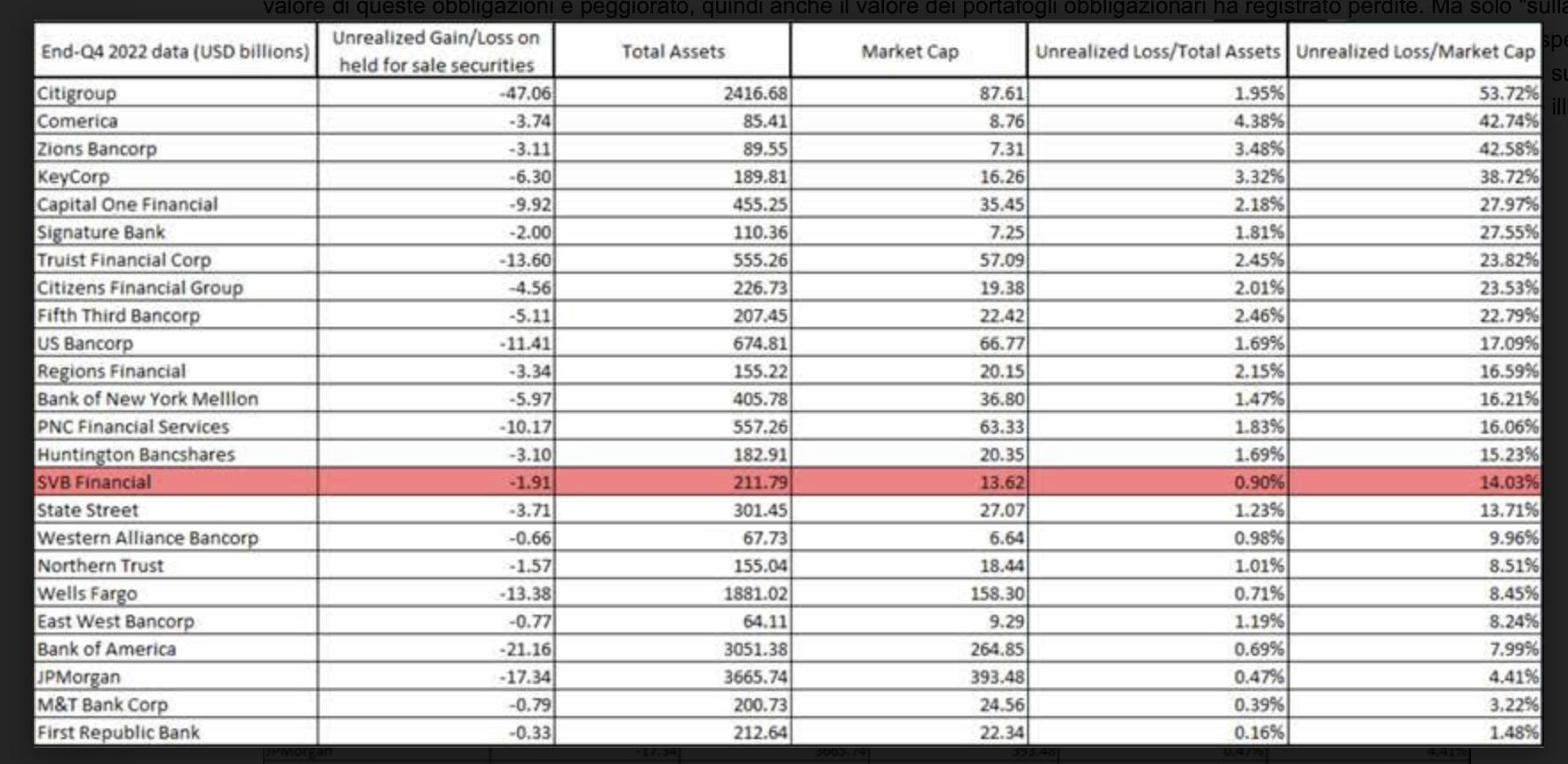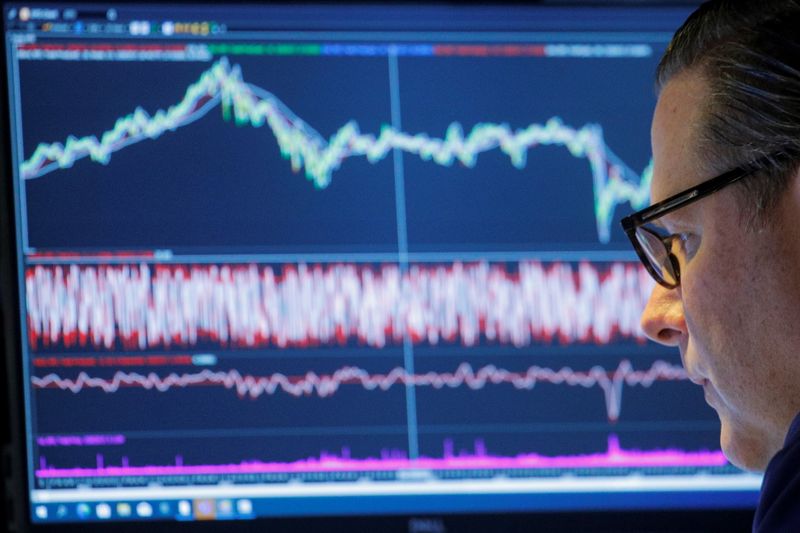By Alessandro Albano
Investing.com – The financial sector is going through a crisis which, for many observers, resembles in some respects what happened between 2007 and 2008, albeit on a smaller scale. The current sell-off in the markets was caused by the SVB (NASDAQ:), whose shares lost 60% on Friday and similar moves are seen today. What’s the reason?
We report below an analysis by Walid Koudmani, Chief Market Analyst by XTBand the XTB Research Team on the SVB crisis and the outlook for financial markets now facing an after inflation and interest rates:
Un’altra Lehman Brothers?
Silicon Valley Bank was forced to sell part of its $21 billion bond portfolio to maintain liquidity. As a result, the bank posted a loss of $1.8 billion. The bank attempted to raise more than $2 billion in capital to help offset losses on bond sales. However, the market fears that a domino effect could emerge if the capital increase is not sufficient, given the weak financial conditions of many bank-backed tech start-ups.
What caused such a huge loss?
US banks hold significant amounts of US Treasuries in their portfolios. As a result of the Fed’s interest rate hike, the value of these bonds deteriorated, so the value of the bond portfolios also recorded losses. But only “on paper”, defined as an unrealized loss. For this loss to materialise, the bank must sell its bonds before the repayment date, often caused by liquidity problems. This happened to Silicon Valley Bank. However, the potential problem of rising unrealized losses on bond portfolios applies not only to Silicon Valley Bank, but also some of the largest US banks. The extent of the phenomenon is illustrated in the graph below. The protagonist of today’s story is highlighted in red.

Are Wall Street bankers close to disaster?
Apparently, the value of unrealized losses in the portfolios of Wall Street’s largest banks is substantial and has increased significantly following interest rate hikes. The Federal Deposit Insurance Agency reported in February that unrealized losses by US banks on maturing securities as of December 31 totaled $620 billion, up from $8 billion a year earlier, before the Fed its policy process. It is worth examining the amount of unrealized losses on the portfolios of the four largest US banks.
Will Silicon Valley Bank be just the first?
If Silicon Valley Bank is unable to raise capital, it will be forced to sell more bonds to maintain liquidity. This could cause panic as markets fear the 2008 scenario repeating itself again. The first signs were visible yesterday. Shares of First Republic, a San Francisco-based bank, fell more than 16.5% after hitting its lowest level since October 2020. It was the second-biggest loss among the companies. Zion Bancorp is down more than 12% and SPDR S&P regional banking ETF is down 8% after hitting its lowest level since January 2021.
Major US banks also suffered, with Wells Fargo (NYSE:) & Co by 6%, JPMorgan Chase & Co (NYSE:) by 5.4%, Bank of America Corp (NYSE:) by 6% e Citigroup Inc (NYSE:) by 4%. Since Thursday’s crash, more than $80 billion has “disappeared” from the stock market. JPMorgan’s value fell by $22 billion.
The voice of common sense
However, it seems that predictions about the onset of another financial crisis need to be taken with caution.
There are three reasons:
- First, the bonds held by banks are largely US Treasury bonds, not toxic bonds “backed” by bad mortgages as was the case in 2008.
- Second, banks will realize losses on their bond portfolios only if they have to sell them sooner, before the repayment date.
- Third, if banks don’t have problems with current liquidity, they won’t have to liquidate their bond portfolios at an earlier point in time.
In summary, the current liquidity conditions of the banking sector are crucial. Investors need to monitor Silicon Valley Bank’s financial condition and whether the equity issues will close the $1.8 billion gap and restore the bank’s liquidity.
